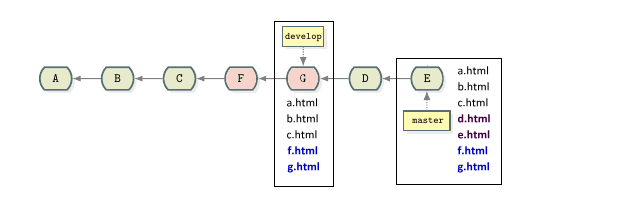

You can undo the changes made by a commit by using Git revert to create a new commit that reverses those changes. To hard reset a branch to a different commit than the last commit, specify the commit ID or a partial commit ID that uniquely identifies the commit: git reset -hard

The -soft flag tells Git to reset the branch to the specified commit, but to keep all subsequent changes as staged and unstaged changes per their previous state.Ī common use of Git reset is with the -hard option to discard all uncommitted changes in all files since the last commit: git reset -hard.The -mixed flag tells Git to reset the branch to the specified commit, but to keep all subsequent changes as unstaged changes.

Be careful with this option since you can lose work using it.
RESET FILE TO MASTER GIT FULL
Git checkout also supports reverting a file to a previously committed version when you specify a partial or full commit ID that uniquely identifies a commit: git checkout įor more information about finding a commit ID, see Find a commit ID.įrom the menu bar, choose Git > View Branch History to open the History tab for the current branch. You can use the Git checkout command to discard uncommitted changes to a file by reverting the file to its last committed version: git checkout įor example, git checkout README.md discards uncommitted changes to the README.md file. Unstaged files show up in the Changes section If the file is in the Staged Changes section, right-click it and choose Unstage. In the Changes view of Team Explorer, identify the file with the changes that you want to discard. Visual Studio 2019 provides a Git version control experience by using the Git menu, Git Changes, and through context menus in Solution Explorer. If the file is in the Changes section, right-click it and choose Undo Changes to discard all changes to the file since the last commit. Unstaged files show up in the Changes section. In the Git Changes window, identify the file with the changes that you want to discard. Visual Studio supports discarding uncommitted changes to a file by reverting the file to its last committed version. For more information, see the Visual Studio 2019 - Team Explorer tab. Visual Studio 2019 version 16.8 also offers the Team Explorer Git user interface. Visual Studio 2022 provides a Git version control experience by using the Git menu, Git Changes, and through context menus in Solution Explorer.
RESET FILE TO MASTER GIT HOW TO
For more information, see How to create a commit. Fix a problem introduced in a prior commit by creating a new commit that includes the fix.
RESET FILE TO MASTER GIT UPDATE
For more information, see How to update your last commit. Amend your last commit to modify its content or message.Because this approach won't rewrite existing commit history, it's suitable for reversing changes made by commits that were pushed and are in use by others. Undo the changes made by a shared commit by creating a new commit that reverses the changes.Revert a branch to a prior state by resetting it to a previous commit.You can also revert a file to any committed version. Discard uncommitted changes to a file by reverting the file to its last committed version.When you want to undo changes in a Git repo, first decide what type of changes you want to undo. Azure DevOps Services | Azure DevOps Server 2022 - Azure DevOps Server 2019 | TFS 2018


 0 kommentar(er)
0 kommentar(er)
